Chairperson
Peter Chen, Professor, International Advisor for Asia Association of Coaching Science, New Zealand
Presenter
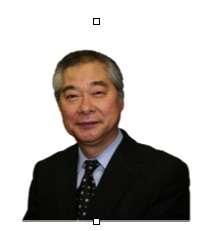
Kazuhiko Watanabe, Ph.D.
Professor Emer. Hiroshima University. President of the Asian Association of Coaching Science. President of Institute of Sport and Health Science.
Japan
Abstract: Coaching science was understood as one of the applied sciences which based on many different basic sport sciences, such as biomechanics, physiology, psychology, kinesiology, etc. There are still arguments on the ‘originality’ or the ‘identity’ of coaching science. Nevertheless, coaching science has been expected to support in many practical fields of exercise and sport for improving sports performance. The present lecture will focus on the ‘Sensitive Biomechanics’, and will introduce some examples of experimental and training applications to develop the effective coaching & training system. Sport biomechanics has a stable possibility to improve the performance in sport for example, to find the best motion or skill in many sport items, by using video, EMG, metabolism, force plate and computer system. But still, there is a gap between laboratory (scientist) and field of coaching and training (athletes, coaches and trainers). How can we apply up-to-date technology to coaching is an important issue of coaching science. So far, the simulated ski jump training has been applied to athletes in wind tunnel for capable of ‘feeling’ wind effects by athlete ‘sensory organs’ and catching his best posture in the approaching and in the flight phases. The ‘foot scan system’ has been used to find the best position for ski jumping. The ‘feeling’ the foot pressure from ground and continuously displayed monitor of COP (Center of Pressure) trajectory were jointly provided for the feedback discussion of athlete and coach. In addition, a new device of balance training system will be introduced. The shift board apparatus which makes an unexpected horizontal movement to the subject and induces the sensitive feedback for protecting falls, by using ‘step strategy’. The ‘hip strategy’ balance training system will be also introduced. Taken together, applications of ‘Sensitive Biomechanics’, hopefully, innovate coaching science, by using technology and the passion of the researchers in coaching.
Dr. Kazuhiko Watanabe is Prof. Emer. Hiroshima University, President of the Asian Association of Coaching Science. Graduated:Tokyo University (Doctor Program of Graduate School). 1) As a member of Science Committee of Ski Association of Japan, supported coaching as found the best position of the “eggshaped posture” in downhill, in Sapporo Olympic Games. He started ski jumping research from Lake Placid Olympic Games, and focused on the best jumping form in flight, and found the “V Jumping style” using a wind tunnel. 2) Worked as a member of 15th Japanese Antarctic Research Expedition (medical researcher) (1973-1974), investgated pollution near the “Syowa Base” in Antarctica, by means of bacteliology, as a monitoring point of the earth. 3) Worked as a director of the IOC Medical Commission sub-commission on Biomechanics and Physiology of Sport in Nagano Olympic Games. He proposed a new research project of “Sports Science Education” at Atlanta Olympic Games to Mr. Prince de Merode, Vice President of IOC. This project has performed as the first event in the Olympic history.
Invited Lecture 1
Chairperson
Junichi Kasai, Professor, Waseda University, Japan
Xiaoping CHEN, Professor & Deputy Dean, Faculty of Physical Education, Ningbo University, China
Presenter
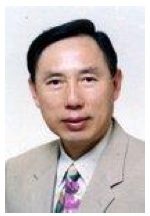
Jasson Chiang, Ph.D.
Professor and Director , Physical Education and Sports of the Chinese Culture University
Former President, Asian Council of Exercise and Sports Science(ACESS)
First Vice President, Asia Association of Coaching Science (AACS)
Taiwan
Abstract: Two decades ago, the position status of school coach in Taiwan was considered to be a “free occupation”, i.e. – not a recognized position, no professional standards, no official decision-making authority, no formal education required, limited job security and no retirement pension. Three major actions have been implemented since then to improve this situation including: legislation, education and, on-duty training. State Legislation for the Employment of the School Coach State Sport Act, (more specifically Article 13) was revised and Amended on Jan.13, 2003, which enacted regulatory guidance to develop coaches for, schools at the university and below to augment the inventory of coaches, and to advance professional expertise. Another revision of Sport Act took place and Article 13 was again amended and promulgated on July 12, 2007 which empowered the government to establish a long term coach and athlete cultivation scheme. Coach education at the post graduate level in Taiwan had long been overlooked. The resulting support was given and two post graduate coaching science programs in Master and Doctoral programs were permitted and founded in 1994 and 2005, respectively. Some of the higher institutions implementation includes: National Taiwan Sport University: Masters program in 1994 / Doctoral program in 2001; Chinese Culture University: Masters program in 1994 / Doctoral program in 2005. Since these early seeds were planted, we have now cultivated over 637 coaches with Master Degree and 21 coaches have obtained their Doctoral Degree. A summer distance learning program was implemented in 2009 which enables school coaches to go abroad and learn the most updated knowledge in coaching science in other institutions of higher learning. The above actions have opened up a new era in coach development for Taiwan.
Dr. Jasson Chiang received his Ph.D. from Oregon State University in 1988 and he is currently serving as Director of Physical Education and Sports of the Chinese Culture University, Taipei, Taiwan. His additional focuses include being the Vice President of Asian Association of Coaching Science (AACS), President of the Taiwan Strength and Conditioning Association (TSCA) and serves as a member of the Medical Commission, National Olympic Committee of Taiwan since 1995. Since 1990, Professor Chiang has devoted himself to legislation, education and on duty training for coaches in Taiwan. Dr. Chiang’s dedicated research concentration is Exercise Physiology and Immunology and his teaching subjects includes Exercise and Sport Sciences; Exercise Physiology; Sport Training focusing on Theory and Practice. His past assignments include National Track Team Coach for the Kingdom of Swaziland and former president of Asian Council of Exercise and Sports Science (ACESS).
Chairperson
Masao Asaoka, Ph.D., Professor, International Pacific University, Japan
Presenter

TaeWon Jun, Ph.D.
Professor and Dean, College of Education, Seoul National University
Korea
Abstract: Recently, while the standard of living in Korea has been improved by high-tech science, it reduced the level of physical activity. Moreover, excessive food intake leads to obesity and increases the risk of metabolic disease. Especially, educational system based on college entrance exams decreased the physical education classes and the amount of physical activity for students. Consequently, it caused low physical fitness level, high prevalence rate of metabolic syndrome and high rate of suicide and bullying in students. The importance of physical education as of the most appropriate class subject to deal with these problems is now on the rise. The school physical education in Korea is beginning to change its system to be incorporated with sport science. For instance, the Korean Ministry of Education established Physical Activity Promote System (PAPS) to improve former annual physical fitness test based on scientific evidence. The Korean Ministry of Education also increased physical education class and obliged establishment of school sport clubs, and expended recruitment of sports specialist in schools. Moreover, a large number of professional instructors for student-athlete has been produced and the training program for fostering instructors has been provided. Coaching science system was initially applied for elite-athlete. To improve capability of elite-athlete, the Korea Science Sports Institute was established in 1980. Korea coaching system assigns the specialized sport scientist to each individual and team sports, thereby providing suitable scientific information and performance enhancement. As a results, Korean elite-athletes have recorded the great results in international competitions such as, Olympic game. Furthermore, the training programs for professional instructor provide the effective training management strategy and the training quality for superior performance. To improve the coaching system, the training program will be well integrated with sports science and coaching in the future.
Dr. Tae Won Jun is the Dean of College of Education, Seoul National University in Korea. He received his Ph.D.in exercise science from Oregon State University in 1986. He was a journalist, Dong Yang News Agency in Korea(1979-1980), Head Researcher, Korea Sports Science Institute(1986-1988), Head of Department of Physical Education at Seoul National University(2000-2002, 2012-2014), and President, Korean Society of Exercise Physiology(2005-2007).His research interests lie in the fields of Physical Activity, Health and Physical Fitness, Theory and Methodology of Sports Training. An editor of 10 books and author of over 100 publication in scientific and sports journals in English and Korean. He was one of the Founding Members and the 1st president of the Asian Council of Exercise and Sports Science (ACESS) (2001-2005).
Chairperson
Yun Wang, Ph.D., Distinguished Professor, Tianjin University of Sport, China
Presenter
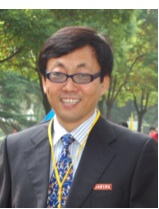
Liu Yu, Ph.D.
Distinguished Professor and Dean, School of Bio-Kinesiology, Shanghai University of Sport
China
Abstract: Neuromuscular Functional Training (NFT) refers to the theory and the practice of training for enhancing both the output (e.g. strength and power) and the function of neuromuscular system. Training methods and instruments play the key roles in either sports or exercise. Nowadays, traditional training methods cannot completely meet the requirements for diverse development of neuromuscular function. In this study, two innovative training methods and instruments were developed: 1) Plyometric Weight Training has been proposed based on plyometric training and weight training to gain the maximum muscle strength and power; 2) dumbbell and barbell having adjustable inertial resistance load characteristic have been developed by means of the disturbance control of human body to improve core strength and coordination of muscles. Experimental results indicated that these training-modes significantly enhanced the training effects of neuromuscular strength and function from scientific point of view.
Dr. Yu Liu is Distinguished Professor and Dean of School of Kinesiology, Shanghai University of Sport. He is also Director of Key Laboratory of Exercise and Health Science, China Ministry of Education, Associate Editor-in-Chief of Journal of Sport and Health Science, and the editorial board member of journals: Footwear Science, China Sport Science, Chinese Journal of Sports Medicine etc.. Dr. Liu’s researches focus on the dynamics of human musculoskeletal system and motor control strategies during locomotion. In particular, he is dedicated to the study of the intersegmental dynamics of lower limbs during sprinting, with the goals of understanding the mechanisms of hamstring strain injury, and the neuromuscular control of the movement. He published more than 100 pear-reviewed journals papers in English and Chinese.
Chairperson
TaeWon Jun, Ph.D., Professor and Dean, College of Education, Seoul National University, Korea
Presenter
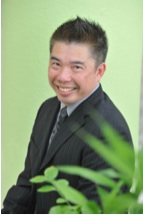
Michael Chia, Ph.D.
Professor and Dean, Physical Education and Sport Science, National Institute of Education, Nanyang Technological University,
Singapore
Abstract: Safety is a pre-requisite for children and youths who exercise and train in the hot and humid weather of Singapore, which is located in the Tropics. Nationally, more youths are engaged in exercise and outdoor sport and this exposes them to heat ailments, especially in the Tropics. Coaches and Physical Education (PE) teachers have an important role in providing young people with up-to-date exercise hydration knowledge before, during and after exercise. However, it is not known if such professionals have the requisite knowledge and this was the main rationale for the study. Participants of this study consisted of 193 coaches and 164 PE teachers. They completed a 31-item exercise hydration knowledge quiz, with an established construct and content validity. An average competence score of 64.0±11.6% and a low passing rate of 7.8% were observed. Key sources of knowledge for the sport professionals were through workshops, lectures and the internet. At the 90th percentile, both coaches and PE teachers, had quiz scores of 77.4%, below the minimum passing score of 80%. Overall, professionals dealing with youths do not yet have the minimum competence in terms of exercise hydration knowledge and educational efforts at ameliorating this deficiency are recommended. The efficacy of an exercise hydration education intervention programme will also be discussed.
Dr. Michael Chia is Professor of Paediatric Exercise Physiology and Dean for Faculty Affairs at the National Institute of Education, Nanyang Technological University in Singapore. An active researcher on exercise and physical inactivity and health among youths and adults in Singapore, he is published extensively in his expert area. He contributes to expert panels in exercise, physical activity, physical education and sport in Singapore and also internationally, including that of the International Olympic Council Medical Commission. He is recipient of many research, teaching and service awards. In his role as Dean for Faculty Affairs, he leads and mentors academic staff of the NIE in research, teaching and service requirements of the university, in the context of earning promotion and tenure. He enjoys immensely his work and his play.
Theme :Sport Performance and the Coaching Science
Chairperson
Tomohiro Noguchi, Professor, Nihon University, Japan
Tadashi Takeda, Ph.D., Professor, Hokusho University, Japan
Presenters

Xiaoping Chen, Ph.D.,
Professor and Deputy Dean, Faculty of Physical Education, Ningbo University
China
Abstract: “Physical training” is a hot issue in current world high performance training. It also becomes the focus, difficulties and breakthrough during the Olympic preparation in China since the year of 2000, naturally along with the wide debate on it. The focuses of high-performance physical training currently include the emphasis on movement, redefinition of “core”, balance of aerobic and anaerobic training, as well as the investigation on high-intensity interval training and short-term sprint interval training.
1.Focus on "action quality” – the key of functional strength training
Highly Attentions to the Sports life of athletes, improving the competitive ability and at the same time avoiding the sports injury, is an important tendency in modern sport training. In this background, the Chinese athletes began to attach importance to this field, which is called "functional movement" training. This training can improve the movement quality effectively and reduce even prevent the injuries.
2.Balance between aerobic and anaerobic is the key of the special endurance training
Endurance, especially endurance for an event, is an important content of sports training, but also a focus in training research. Determining the ratio of aerobic and anaerobic in the different sports event is a key precondition and basis for special endurance training. "Volume" or "intensity" training will cause the body to stimulate the different reactions. A large volume of low-intensity training mainly enhance the body's aerobic capacity and high-intensity anaerobic training is mainly to solve the original phosphate (ATP and CP) and glycolysis metabolic capacity. A variety of training has their own target goal. Now there is no evidence that the use of a certain kind of training can simultaneously develop the entire endurance. Therefore, the "volume" and "intensity" load are two aspects of endurance training. They are determinants of endurance level together, but can not choice simply and can not be more opposite.
Dr. Chen Xiaoping is professor in Ningbo University, he studied at Shanxi University and Shenyang Institute of Physical Education, bachelor's and master's degrees. In 1985 worked as Lecturer at the Beijing Sports University and then went to German Sport University Cologne to study, got sports science doctorate for sports training and sports medicine. In recent years, undertook and completed 30 national, provincial and ministerial research projects, published more than 70 papers and three monographs. The main research areas are strength and endurance training as well as training Diagnostics and Monitoring for elite athletes. Now is an expert of the State Sports General Administration and supporting Chinese national rowing, canoeing and speed skating team preparing for Summer and Winter Olympic Games.
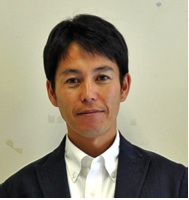
Satoshi Mori
Associate Professor, Department of Community Development, Tokai University, Japan
Abstract: Ski jumping is entirely competition-oriented winter sport that has a long tradition and high popularity especially in Europe and also in Japan, and was part of Sochi Winter Olympic Games 2014. Japanese ski jumping team won a bronze medal in the team competition and a silver medal in the individual competition at the Sochi Olympics, making its first Olympic medals finish in the event since winning the competition on home soil at the 1998 Nagano Games. The ski jumpers go down with wide and long skis, jump on a specially designed jumping hill and attempt to fly as far as possible. The final result is determined by the length of the jump and style marks. The ski jump is divided into four separate sections; 1) In-run, 2) Take-off, 3) Flight and 4) Landing. In each part the jumper required to jump with a particular technique and physical performance. To reach a long distance, the ski jumper need powerful take-off during fast ski gliding speed about 90 km/h and aerodynamically advantageous body position during flight. The safety landing is required with the Telemark landing style (one foot in front of the other). The number of hill jump is limited due to extreme and changing ski jumping conditions. Therefore, developed training system is required to improve ski jumping technique.
Satoshi Mori started Ski jumping at the age of nine years and started the Nordic combined ski competition at age 12. He belonged to Japanese National Ski team from 1988 to 2003. He took the 5th place in team competition of the Nordic combined in 1998 Nagano winter Olympics, the 8th place in 2002 Salt Lake City winter Olympics, the 2nd place in the Wolrd Cup ,Zakopane in 1999, and also the 6th place in individual sprint of Nordic World Ski Championships in 1999. Now he is the ski jumping coach for Ski Association of Japan. His main research area is training of Nordic skiing and ski jumping.

Jae Kyung Byeon, Ph.D.
Professor,Chungbuk University
Korea
Abstract: When looking into a woman's lifetime, one thing that stands out is the menstrual cycle that starts at puberty, lasting through adolescence until reaching menopause. However, menstruation, a perfectly natural physiological effect, has often been classified as "dirty" and "taboo" for centuries. Recently many studies on menstruation have been conducted and some have shown an interesting correlation between exercise ad menstruation. Understanding the effects of a menstrual cycle on exercise ability can have a direct impact on performance. Therefore, I will walk you through how a menstrual cycle is divided, then look into the physiological effects menstruation has on a female's body, and look at how it can effect one's exercise performance.
Dr. Jae Kyung Byeon is a professor at Chungbuk national University, Korea. Her research interests are in exercise physiology and dance education. She is currently the vice president and editor-in-cheif of the Korean Society of Exercise Physiology. She is also the vice president of the Korean University Association of Athletics Federation.
Chairperson
James Shih-Chung Cheng, Ph.D. , Professor , National Taiwan Sport University,Taiwan
Tadayoshi Asaka, Ph.D., Professor, Hokkaido University, Japan
Presenters
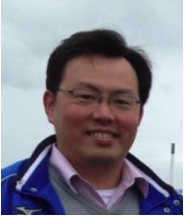
James Shih-Chung Cheng, Ph.D.
Professor , Graduate Institute of Athletics and Coaching Science, National Taiwan Sport University
Taiwan
Abstract: Successful throwing training consists of explosive power, muscle strength, flexibility, agility and good supportive training. Poor training programme has become major factor causing shoulder instability in throwing events. However, most coaches in Taiwan do not have access to the correct concept of anatomy and kinesiology, which has led them to a risky and ineffective training programme. Medical specialists have rare opportunities to observe or understand poor throwing technique, therefore, the following rehabilitation and re-conditioning cannot be successful. The gap between two disciplines has made injury prevention impossible. The development of shoulder instability and how it related to commonly seen poor techniques in baseball pitchers will be introduced. The purpose of this presentation is to give a brief idea about how poor technique causes Glenohumeral International Rotation Deficit (GIRD) andsubsequent shoulder instability.
Dr. James Shih-Chung Cheng got his Ph.D. degree from the Centre for Sports Medicine in the University of Nottingham (UK) in 2009. His main research interest is to identify potential shoulder injury risk factor in throwing sports and hope to bring positive impacts to sports training and to prevent athletes from early fatigue or injury. He is involved with many national sports science projects working with Taiwan government. Dr Cheng is currently the General Secretary of Asia Association of Coaching Science, the general secretary of Taiwan Sports Coach Association, deputy general secretary of Chinese Taipei Track and Field Association, and also a member of Medical Committee at Asian Athletics Association.
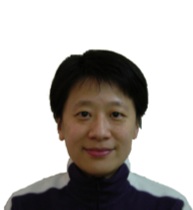
Yun Wang, Ph.D.
Distinguished Professor, Tianjin Key Lab of Exercise Physiology and Sports Medicine, Department of Health and Exercise Science, Tianjin University of Sport
China
Abstract: Research on the central nervous system’s ability to control upright posture has a long and influential history in motor control. Since the classical works by Hughlings Jackson (1889), researchers have agreed that muscles are not controlled independently by the brain but are organized in groups manipulated by a smaller number of variables as compared to the number of muscles. There have been many experiments in the postural control domain across a range of motor tasks that have provided support for this viewpoint. One aspect of the maturity of the field is the application of this viewpoint to aging-related change in the postural stability. I will trace out the evidence and recent progress that begin with the assumption of control of redundant neuromotor systems, which might incorporate both synergic and postural adjustments. In this view, aging leads to a loss of adaptability that can be expressed as a different muscle strategies stabilizing upright posture. It is proposed that the recent progress in this field provide a foundation for investigate the ways of training in improving postural control in older adults.
Dr. Yun Wang received a M.S. degree in Sports Medicine from the Beijing Sport University in 1995 and a Ph.D. in Biomechanics from the Hiroshima University in 2004. She worked in the Beijing Institute of Sports Science as an Assistant Professor from 1995 to 1999. Dr Wang worked as a postdoctoral fellow in the Department of Kinesiology at the Pennsylvania State University and the Department of Physical Medicine and Rehabilitation at the Northwestern University from 2004 to 2007. Since 2013, she has been working in the Tianjin Key Lab of Exercise Physiology and Sports Medicine, the Department of Health and Exercise Science at the Tianjin University of Sport. Her current research interests are biomechanics and motor control of multi-muscle postural coordination. Dr. Wang's research has been funded by National Natural Science Fundation of China, Japan Society for the Promotion of Science, Meiji Yasuda Life Foundation of Health and Welfare, Nakatomi Foundation, etc.
Chairperson
Masamitsu Ito, Ph.D., Nippon Sport Science University, Japan
Junjiro Kubo, Ph.D., Heisei-International University, Japan
Presenter

Andi Li-An HO, Ph.D.
Assistant Professor, Department of Physical Education and Graduate Institute of Sports Coaching Science, Chinese Culture University
Taiwan
Abstract: Strength and conditioning training is now a major part in modern sports. Years of experience in research and practice has led us to a world where almost all athletes are learning how to lift and participating in energy system training. Planned and periodized strength training programs can make our athletes strong and fast, while well-designed conditioning training programs can improve the specific energy systems that support sport performance. However, training programs are effective only when the risks of training are minimized. Many of the current training programs seemed to be effective, but very often we see similar injuries and negative effects produced by these programs. The similarities are so obvious that people believe the causes of these problems may hide in the details of the current training methods. The workshop is to explain several methods we use to prevent negative effects and lower the risk of injuries when training collegiate athletes. These methods include our motor learning and control programs, mobility and stability assessment, preparation activities and balanced program design. In motor learning and control, we focus on the teaching and evaluation of upper and lower body movement patterns with a concentration on the movement control in squatting exercises and hip dominant exercises. In stability and mobility training, we focus on the progression of corrective exercise when movement dysfunction is detected. In preparation activities, we focus on the warm up process that will prepare athletes for a lifting session. In program design, we emphasize on maintaining balance among different directions of strength training. The workshop is to share our experience in applying these training methods.
Dr. Andy Li-An Ho is currently the assistant professor of Chinese Culture University. He is also the strength and conditioning coach who works with a variety of school teams and individual athletes. Dr. Ho has years of experience in practicing, competing, and teaching combat sports. He also has a master degree in sport coaching science from Chinese Culture University, a master degree in strength and conditioning from Springfield College, and got his Ph.D. in Physical Education from Springfield College. He is currently teaching exercise science courses in undergrad and graduate levels and coaching intercollegiate athletes. Besides teaching and coaching, Dr. Ho also conducts research and has published research articles in national and international peer-reviewed journals.